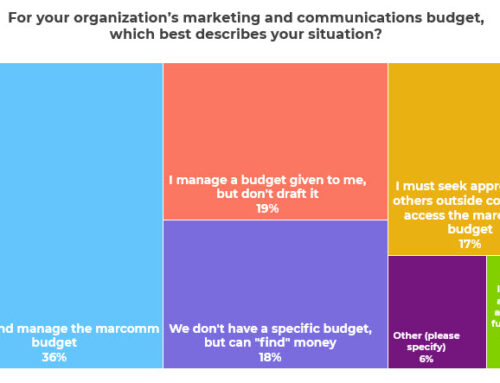Is your process for creating and distributing your nonprofit’s content (you know, the stuff you put in your newsletter, on your website, etc.) non-existent or always done on the fly? The ad hoc approach can work, but it only gets you so far.
That’s the conclusion that CompassPoint Nonprofit Services reached last year. Nelson Layag, project director at CompassPoint Nonprofit Services, explains how they made the decision to get more organized, and what they are doing now, in our latest video interview on Junction C: Where Creating and Curating Meet Content and Conversation,
Nelson explains how they had both a strategy and some good ideas, but that they had not “operationalized” how the work would actually get done. So they created a Communications Team, with the executive director, the project director, the grant writer, and the IT guy. They meet every two weeks to discuss what’s coming up, including the content for a new weekly e-newsletter. They want to limit that newsletter to four items, but keep it timely, so they only discuss a couple editions of the newsletter at a time. They also realize that at any given time, someone on the team will be out of the office, so other team members are empowered to make decisions, to keep work moving forward.
One important element of the new process has been the Editorial Calendar. CompassPoint turned to Holly Minch at Lightbox Collaborative for help with the design. The calendar is a spreadsheet with projects down the side and communications channels across the top. Each month has its own tab. Check out the editorial calendar here. It’s made a big difference but they continue to look for the perfect solution. “We’re finding some challenges as our list of projects grows,” says Nelson, “and we’re looking into simple project management tools (BaseCamp, Zoho) as an alternative.”
Focusing on the editorial process now means that CompassPoint staff are now much more cognizant of the “communications arc,” or the opportunities to communicate through a project’s life cycle. While they (like most nonprofits) have been good at announcing the start of projects, they’ve been inconsistent about following through and sharing what’s been learned at the end of a project.
“The communications arc helps us think a lot longer in advance and to see all of the various pieces,” says Nelson. “It’s a different way of working: We realize that we need to start earlier in the process to figure out how the communications can be most effective.”
[yframe url=’https://www.youtube.com/watch?v=rxIdvZDTgGY’]
Don’t see the video player? Watch it here.





